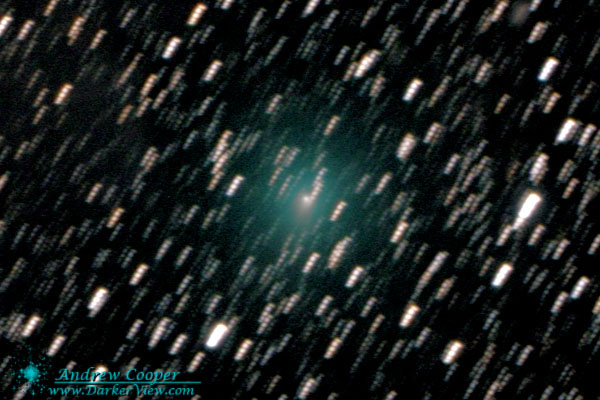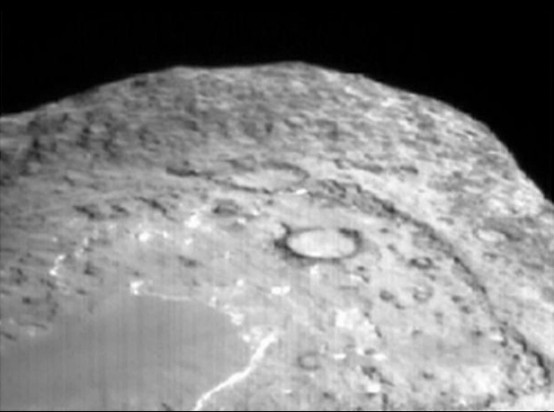Video above: The launch of Deep Impact in 2006. Courtesy of hackreik via YouTube.
This week sees the fly by of the Deep Impact space craft with comet [3]Hartley 2. In preparation the comet has been given the once over by both the [4]mighty Arecibo radio telescope and the [5]Hubble space telescope.
Hartley 2 is the smallest comet ever visited by a space craft at roughly a mile across, and observations from Arecibo radio telescope show it to be [6]almost peanut shaped.
Image right: The Deep Impact space craft in its clean room. Image courtesy of Ball Aerospace.
Deep impact (re-christened [7]EPOXI for this new mission) will map its tightly curved surface and study the make up of gasses emitted by it.The mission has already thrown up [8]at least one surprise: The comets emission of the gas [9]cyanogen was seen to wax and then wane by five times its initial value, without any signs of a new pocket of gas being violently released. Outbursts, particularly of cyanogen, like these are usually accompanied with and increase in the amount of dust emitted by a comet, by this has not been seen. And Hartley 2, despite its small size, is throwing out as much water vapour as the much larger [10]Tempel 1, suggesting it surface is a cauldron of activity.
The various differences between comets, and the plethora of [11]surprises they keep flashing at science makes the exact origins of these wanderers form the deep dark of the outer solar system a [12]tantalising mystery. The current best model is that these are icy stragglers left behind by the great [13]protoplanetary disk that birthed our solar system. But the many and varied behaviors they show suggests that they may not all have the same origins.
Punters can [14]follow the mission on its blog, or if you prefer there will be a [15]u-stream lecture given by the comets discoverer tomorrow. Deep impacts first target was the comet Tempel 1 which was analysed in a unique fashion by blowing a hole in it with a huge copper projectile. Since then the probe has been moonlighting by [16]studying extrasolar planets, and now is set to fly past Hartley 2 at a distance of 700km on November the 4th. Hopefully the fly by will give us back here on Earth a better understanding of where this little wandered came from, how old it is and what is is made of. Emily Lakdewalla over at the Planetary Society has [17]a good write up on this, and their website includes [18]a timeline of what the long serving spacecraft will be doing and when!
Image above: The bizarre surface of comet Tempel 1, Deep Impacts first voyage of exploration. Courtesy of NASA.
List of links:
[1]http://www.boeing.com/defense-space/space/delta/delta2/delta2.htm
[2]http://www.space.com/deepimpact/
[3]http://cometography.com/pcomets/103p.html
[4]http://www.naic.edu/
[5]http://www.sciencedaily.com/releases/2010/10/101006131443.htm
[6]http://www.naic.edu/~pradar/103P/
[7]http://epoxi.umd.edu/1mission/index.shtml
[8]http://epoxi.umd.edu/7press/news/20101021.shtml
[9]http://www.britannica.com/EBchecked/topic/147747/cyanogen
[10]http://deepimpact.umd.edu/science/tempel1.html
[11]http://news.bbc.co.uk/1/hi/sci/tech/4801968.stm
[12]http://www.nature.com/news/2010/101026/full/4671013a.html
[13]http://www.daviddarling.info/encyclopedia/P/protoplandisk.html
[14]http://epoxi.umd.edu/6outreach/daily.shtml
[15]http://www.jpl.nasa.gov/events/lectures_archive.cfm?year=2010&month=11#myComet
[16]http://epoxi.umd.edu/2science/targets.shtml
[17]http://www.planetary.org/blog/article/00002744/
[18]http://www.planetary.org/explore/topics/deep_impact/hartley2_timeline.html



No comments:
Post a Comment